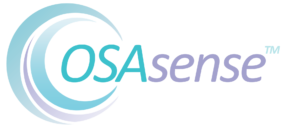OSAsense offers a service that safely and easily excludes Obstructive Sleep Apnea (OSA). The service consists of a combined questionnaire and an overnight sleep test at home. The home measurement only requires a wristwatch and a finger sensor, which makes the service very accessible. The data collected during the measurement and questionnaire are automatically analysed by a validated algorithm. The results of the algorithm provide direct insight into the patient’s symptoms and the severity of sleep apnea and other sleep related disorders.
The OSAsense service has been validated in the DiagnOSAS study (Fabius et al.) in which it has been demonstrated that sleep apnea can be safely excluded. The DiagnOSAS study was carried out in collaboration with the University of Twente, Twentse Huisartsen Onderneming Oost Nederland (THOON), Federatie Eerstelijns Almelo (FEA), Menzis, Medisch Spectrum Twente (MST), and the Dutch Apnea Society (Apneuvereniging) has been involved from the start. By safely excluding OSA, unnecessary burdensome and costly diagnostic testing can be reduced at sleep clinics. At the same time, waiting lists in sleep clinics will be filled less with patients who ultimately turn out not to have OSA, which means that patients who do benefit from diagnostic testing and treatment for OSA are likely to be treated earlier.
The clinical validation study comprised of 140 patients. Yet, since the start of the implementation pilot, over 5000 patients underwent an OSAsense test. During this period, the number of unnecessary referrals to sleep clinics were reduced from ~30% to ~14% while maintaining high levels of agreement on OSA severity.
The value of the OSAsense service was investigated in a cost-effectiveness study by the University of Twente (Geessinck et al.). The cost-effectiveness study showed that the OSAsense is capable of decreasing health care costs without loss of quality adjusted life years.
The OSAsense service is mostly used by general practices and provides structured data-collection that enables healthcare professionals throughout the full cycle of care with relevant insightful details regarding the signs, symptoms, measurements, and complaints of the patient. This way, different medical professionals in both primary and secondary care can easily collaborate on providing data-driven and personalized diagnostic and treatment decision making.
Scaling up the initiative is focusing on expanding the included regions for implementation. In addition, with data of over 5000 patients, several studies are currently ongoing on providing insightful information for medical conditions other than OSA.
References:
Geessinck, Floris AJ, et al. “Cost-effectiveness analysis of the DiagnOSAS screening tool compared with polysomnography diagnosis in Dutch primary care.” Journal of clinical sleep medicine 14.6 (2018): 1005-1015.
Fabius, Timon M., et al. “The use of oximetry and a questionnaire in primary care enables exclusion of a subsequent obstructive sleep apnea diagnosis.” Sleep and Breathing (2019): 1-8.

